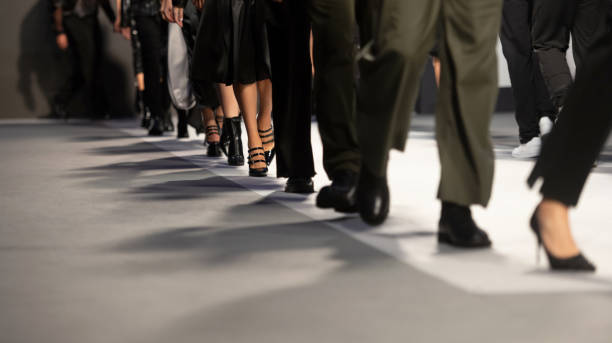In the 1990s, bell-bottom pants came back. Now, early 2000s styles, once made fun of, are popular again. But this rapid cycle isn’t just about clothes. It reflects something deeper about how we live, think, and connect.
The 20-Year Rule Is Dead
For decades, the “20-year rule” guided fashion. Styles from two decades ago would slowly return with a fresh twist. In 2024, that rule is broken. Low-rise jeans made a comeback just 15 years after their peak. Now, Y2K fashion, once mocked, is everywhere again.
Fashion no longer follows a slow loop. It spins like a wheel at a live dealer casino. And social media is the hand pushing it.
TikTok Turned Everyone Into a Trendsetter
Not long ago, fashion was top-down. Designers set the trends. Magazines confirmed them. Consumers followed.
Now? A teen on TikTok can make a $10 thrift-store sweater go viral overnight. Aesthetic trends like “cottagecore,” “clean girl,” or “blokecore” can appear, peak, and vanish within weeks.
This power shift has sped everything up. When anyone can influence style, there’s more noise and more rapid change.
Micro-Trends and the Fear of Missing Out
Every week, there’s a new micro-trend: ballet flats, mob wife coats, coquette hair bows. Blink, and you’ll miss one. This creates pressure to keep up, even if your wallet or personality isn’t on board. That pressure? It feeds anxiety. Psychologists call it “FOMO”, the fear of missing out. Fashion becomes less about self-expression and more about not falling behind.
Why We Keep Looking Backward
There’s comfort in the past. When life feels hard, people like to look back. This happens with movies, music, and clothes.
The world today can be stressful, like with the weather, sickness, or big problems. So, we wear styles from the past. Old styles like low-rise jeans can help us feel calm and safe, even if we don’t know it.
Social Media Has No Seasons
Fashion used to change only four times a year: spring, summer, fall, and winter. Now, it moves with the scroll.
Instagram influencers wear new looks every week. Pinterest boards are updated daily. TikTok’s “Get Ready With Me” trend has turned personal style into a public event. There’s no off-season anymore.
Fast content needs fast outfits. So trends pile up and fade faster than ever before.
Cheap Clothes, Fast Feed
Fast fashion brands like SHEIN, Zara, and H&M can copy a trend and start selling it in just weeks. Some even launch thousands of new items per day. This speed matches our online habits. See it. Want it. Buy it. Post it. Move on.
But while it’s fun for consumers, this cycle has a dark side, one that’s harming both mental health and the planet.
Overstimulation and the Search for Identity
Experts say too many choices can make your brain tired. Seeing many fashion trends every day can make choosing your style feel hard and stressful. Some people switch styles weekly. Others just give up. Clothes are used to help us express who we are. Now they often reflect who we follow.
Recycling Isn’t Just for the Planet
There’s something clever about how fashion reuses itself. Recycling trends are like making a new version of an old song. It’s creative and freshly shows the past.
But there is a problem. Some trends return before culture has time to reflect. The fast pace means we sometimes wear styles with no clue what they meant the first time.
The Rise of Aesthetic Labels
One minute you’re a “soft girl.” Next, you’re into “goblin mode.” These internet-born labels group looks, feelings, and even behaviors into quick categories.
They help people find community, but they also flatten identity. It becomes easy to mistake a trend for a personality.
Still, they reveal something important: people want to belong. Style is just one way to feel seen.
What This Says About Us
The fast fashion cycle reflects a fast world. We crave novelty. We scroll without stopping. We fear being left out. Deep down, many of us are still trying to find out who we are. Maybe it’s time to pause. To ask: do I like this because it’s me, or because it’s trending?
Slowing Down the Cycle
Some people are pushing back. More people are buying used clothes, keeping only a few favorites, and choosing eco-friendly fashion. They want to wear what feels like them, not just follow trends. ” This quiet shift says: wear what feels right, not what’s popular.
It’s a reminder that while fashion may be fast, identity should be slow.

